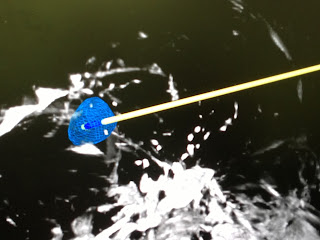Thursday 20 June 2013
I'm Home (CLIC Sargent Home From Home) Part: 2
This is Part: 2 of my post called, ''I'm Home (CLIC Sargent Home From Home)'', as by doing one blog would be far too long. In this post it explains all about my biopsy surgery that I had at Frenchay Hospital, Bristol.
My surgery took place on Thursday 13th June 2013 (luckily it wasn't a Friday). The type of surgery that I had was called, Steriotactic Brain Biopsy. I knew that this surgery was very high risk, but in order to find out if there is any possible treatment to help with my symptoms and because the T3 MRI scan I had in Frenchay Hospital in March 2013 showed that my tumour is now currently active, the Doctors need to know exactly what type and grade of tumour I have. The problem with my tumour is that it is on top of my brain stem, right in the centre of my brain. My tumour is low grade, but it is stopping me from going to school full time, seeing my friends, doing things with my family and after school clubs and other activities. To take a biopsy of my tumour was extremily risky due to the location, it was a decision that I had to make whether or not I wanted to go ahead with a biopsy, I chose to go ahead. After numerous Multi Disciplinary Team Meetings (MDT), my consultant in Bristol, Mr. Pople, asked a Professor called, Professor Gill, to carry out the biopsy operation. Professor Gill specialises in deep brain stimulation for Parkinson's Disease and has carried out two biopsies in the same region that mine was in, my biopsy being the second. Prof Gill asked me the night before my surgery if I would agree to take part in a new procedure called Convection-enhanced delivery of carboplatin for brain stem glioma. This meant leaving a stent in my tumour connected to a catheter which then leads to my skull. This means that if my tumour requires chemotherapy, or if my tumour was to develop a cyst or infact because new treatments are being developed all the time and they are unable to treat my tumour straightaway, the could feed medicine or access my tumour much more easily rather than having to carry out the full operation all over again. I chose to go ahead and have the stent with the cathetar put in, as I know how risky the biospy operation was, so rather than having to do it again if needed to put the stent in, I might as well have it put in the first time. Prof Gill is a very clever man, he helped pioneer the computer system used for mapping my tumour.
Amazingly I had a very good sleep the night before, as it can be quite noisy on the ward with different machines beeping and patients including myself having observations done on a regular basis, sometimes every 15 minutes. It had been a busy day when I arrived into hospital on Wednesday 12th June 2013. Lots of Doctors and Nurses came to see me, asking different questions, taking my bloods and doing neurological testing on me, which I know like the back of my hand since I've had it done so many times. As I was going under general anaesthetic, I was not allowed to eat or drink anything from 12:00am onwards, although I was allowed a few sips of water at 3:00am. This is because if you do eat or drink it can interact with the anaesthetics and make you very poorly. Luckily my surgery was scheduled for 8:30am, so I wouldn't have to feel hungry for too long. I was also very nervous to even think about eating. When I woke up around 7:30am on Thursday 13th June 2013, which was surgery day, I had a lovely shower as I used some of my new LUSH products, I absolutely love LUSH, their products smell so good especially when you are in hospital. I then got dressed into my ever so stylish theatre gown and theatre stockings, although I couldn't get one of the stockings on as I had a cannula in of my foot. The stockings prevent you from getting blood clots in your legs so its very important to wear these until you are up and about and are able to walk around. The anaesthetist called Claire came to see me on the morning of my surgery day. Claire went through a check list to make sure that I was OK to have anaesthetic, I told her that I get very nauseous after having anaesthetic and that I also have the world's worst veins. Claire was very understanding and when I woke up from surgery I didn't feel sick at all, this was because she put anti sickness medicine in my anaesthetic which helped a lot. I was worried that I was going to wake up when I was meant to be asleep under anaesthetic, this was because I was under anaesthetic for 5 hours, but Claire told me that she would be with me the whole time and 'top me up' with anaesthetic when needed. When the theatre porter came to collect me in my hospital bed from the ward, the Nurses on the ward went through a checklist to make sure that all the paper work was signed for and that I was the right patient. I was allowed to have my Mum with me the whole time, right up to the point when I fell asleep. My Mum or Dad have never been with me before when I've fallen asleep. they always had to go as soon as go to the anaesthetists room, which makes it very scary when you are by yourself, especially when people are sticking needles in you and giving you medicine that you can't even pronounce the name of. I don't like to talk very much when I am nervous, and I don't like people talking to me, I like to concentrate on what is happening and block everything else out.
In the anaesthetists room there are lots of different kinds of machines and equipment, many of these are used to monitor you. You would think the room would be quite a big room as you have to fit a hospital bed in there with the patient, the anaesthetist, a couple of other Doctors, all the equipment and in my case my Mum as well, but no, the rooms are very small and tight. The anaesthetists room has a door which enters into the operating theatre.
Once I had been put to sleep using my cannula which doesn't take very long, I had to be taken down the hospital corridor to have a T3 MRI scan of my brain. I then had to be pushed back to theatre to have a heavy metal frame attached to my skull by 4 small screws which went through my skull. I then had to go to the CT scanner to have another type of scan. After this, Prof Gill and the radiologist used the computer system that Prof Gill helped to pioneer, to map my tumour in my brain, so that they could see all the vital veins and arteries. Whilst this was happening I was still asleep for the whole time. It can take anything from 2 - 4 hours to work out the best way to approach my tumour. I was told that if they were not completely confident that they could not reach my tumour, the operation would not happen. Once the images of the MRI and CT scans had been looked at, and the computer system together with the team decide which way to enter my brain from, the biopsy then takes place. I had to have a metal frame attached to my head so it could attach to another frame, in order to keep my head in place. The frame also had a number of holes across the top, a bit like a halo, this is where they make the first incision into my scalp, then drill a small hole through my skull, then a small tube the same thickness as a dry spaghetti string is carefully fed down into the centre of my brain using the computer images they took earlier while I was under anaesthetic, these images would help Prof Gill guide the tube and avoid touching vital parts of my brain. At the end of the catheter there is a small device which took a sample of my tumour, the sample was only the size of a grain or rice. The pathologist was then given the sample of my tumour to take a quick look at it under the microscope, he or she is able to tell whether the sample of my tumour is good enough to be used to get a proper diagnosis. The biopsy is then taken away and sliced into many bits, so that different tests can be carried out. Sometimes the samples are sent to different pathologists to get their opinion, sometimes they are even sent to America if needed.
After the surgery was done, I woke up in the recovery room, although I was extremely thirsty I wasn't allowed to drink anything straight away incase I was sick. I felt very relieved when I woke up that the surgery was finished. Prof Gill told me that it went very well and he was happy with how I was. My Mum, Dad and Sister came to see me in recovery so I didn't feel like I was by myself. I had more observations done and I soon realised when I was asleep the Doctors had put more canals in me my veins. I had one in either hand, the original one in my foot and a monitor that went into my artery in my left wrist.
After an hour or two I was taken back up to the ward where I was staying called the Barbara Russell Unit, I had to stay in a High Dependency Unit on the ward overnight, due to the type of surgery that I had, so that the Nurses could keep a close eye on me.
Danielle :)






